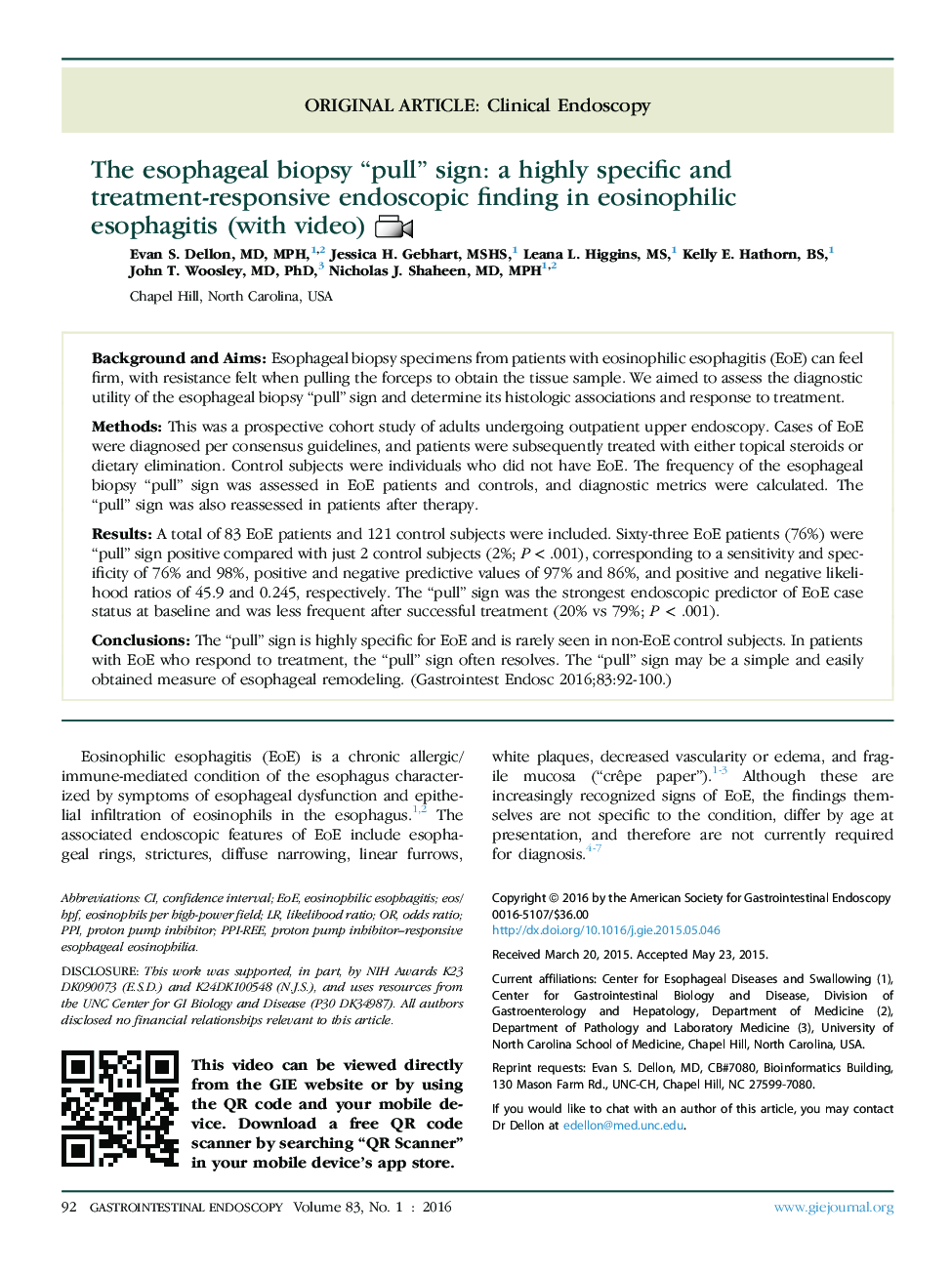| Article ID | Journal | Published Year | Pages | File Type |
|---|---|---|---|---|
| 6097234 | Gastrointestinal Endoscopy | 2016 | 9 Pages |
Background and AimsEsophageal biopsy specimens from patients with eosinophilic esophagitis (EoE) can feel firm, with resistance felt when pulling the forceps to obtain the tissue sample. We aimed to assess the diagnostic utility of the esophageal biopsy “pull” sign and determine its histologic associations and response to treatment.MethodsThis was a prospective cohort study of adults undergoing outpatient upper endoscopy. Cases of EoE were diagnosed per consensus guidelines, and patients were subsequently treated with either topical steroids or dietary elimination. Control subjects were individuals who did not have EoE. The frequency of the esophageal biopsy “pull” sign was assessed in EoE patients and controls, and diagnostic metrics were calculated. The “pull” sign was also reassessed in patients after therapy.ResultsA total of 83 EoE patients and 121 control subjects were included. Sixty-three EoE patients (76%) were “pull” sign positive compared with just 2 control subjects (2%; PÂ < .001), corresponding to a sensitivity and specificity of 76% and 98%, positive and negative predictive values of 97% and 86%, and positive and negative likelihood ratios of 45.9 and 0.245, respectively. The “pull” sign was the strongest endoscopic predictor of EoE case status at baseline and was less frequent after successful treatment (20% vs 79%; PÂ < .001).ConclusionsThe “pull” sign is highly specific for EoE and is rarely seen in non-EoE control subjects. In patients with EoE who respond to treatment, the “pull” sign often resolves. The “pull” sign may be a simple and easily obtained measure of esophageal remodeling.
